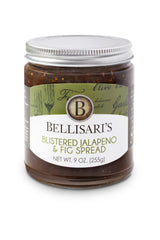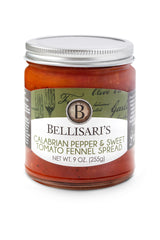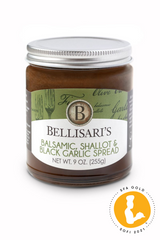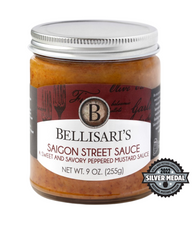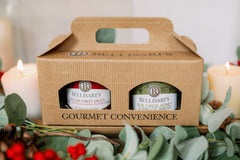
I have had many friends tell me what a great experience the “Bourbon Trail” in Kentucky is and also how much fun the Kentucky Bourbon Festival is to attend that is happening this week. But, for some reason I cannot seem to wrap my head around the whole bourbon phenomenon. I have also noticed that within the gourmet food industry there is a significant increase of recipes and food items that contain bourbon: bourbon pecan pie, bourbon chicken, bourbon balls and my favorite, bourbon glazed bacon. So I figured it was time for me to educate myself on Bourbon 101, so I reached out to David J. Montgomery (aka Professor Cocktail), a writer and critic specializing in books, publishing, spirits, and cocktails, to help educate me on bourbon.
What is whiskey?
The legal definition in the United States is: “Spirits distilled from a fermented mash of grain at less than 95% alcohol by volume (190 proof) having the taste, aroma and characteristics generally attributed to whisky and bottled at not less than 40% alcohol by volume (80 proof).”
Here’s how it works: You take grain and cook it in water. The extracts the sugars from the grain and puts them into solution. This mixture is called the mash. This new mash is then combined with some old mash — aka “sour mash,” the stuff that’s left at the end of the previous distillation process. The sour mash is used because it maintains a consistent level of acidity from distillation to distillation, which is important for the yeast to work properly.
Adding the yeast is the next step. Yeast consumes sugar and releases alcohol through the process of fermentation. The mash ferments until it reaches approximately 11-12% alcohol. At that point, the alcohol kills the yeast and the fermentation process stops.
In order to raise the concentration of alcohol — because who wants 22-proof whiskey? — it needs to be distilled. The fermented mash is heated up to a point where the alcohol begins to evaporate, but the water does not: somewhere between 176 °F and 212 °F. The alcohol vapor is collected and then cooled, which condenses it down to a highly alcoholic liquid (known as the distillate). It is then usually distilled at least one more time, to further concentrate the percentage of alcohol.
Presto! Grain + Water + Yeast = Whiskey
What is bourbon?
Again, the legal definition: “Whisky produced in the U.S. at not exceeding 80% alcohol by volume (160 proof) from a fermented mash of not less than 51 percent corn and stored at not more than 62.5% alcohol by volume (125 proof) in charred new oak containers.”
The important factors here are: bourbon is made from a mash containing at least 51% corn, and after distillation the whiskey must be aged in new, charred oak containers.
What is bourbon made of?
As noted above, the mash must be at least 51% corn. But other grains can also be used. A typical mash might consist of 80% corn, 10% of a flavoring grain, and 10% malted barley. The precise breakdown is known as the mash bill.
The flavoring grain is most commonly rye, which adds an assertive, spicy flavor to the whisky. Popular examples of rye bourbon include Wild Turkey, Jim Beam, and Evan Williams.
Some bourbons, however, use wheat as the flavoring grain, which gives the whiskey a mellower, sweeter flavor. Maker’s Mark, W.L. Weller, and Pappy Van Winkle are all popular wheated bourbons.
The flavor grain could also be oats, rice, quinoa, or any other grain. But these aren’t typical.
Malted barley is added because it helps to promote the process of converting the starch in the grains into sugar. “Malt” means grain that has been allowed to germinate, and then has the process halted by heat. So malted barley is just barley that has begun to sprout.
What is “high rye bourbon”?
This is a whiskey made with a mash bill that reduces the proportion of corn and replaces it with more rye. The mash bill might be something like 70% corn, 20% rye, 10% malted barley. Although still bourbon whiskey, it takes on more of the qualities commonly found in rye whiskey, intensifying the bold, spicy, peppery flavor. High rye bourbons are very dry. Popular examples include Bulleit, Four Roses, and Old Grand Dad.
What about aging?
Aging whiskey in wood barrels is a crucial part of the process, giving the final product much of its flavor (and color). Aging tames the whiskey, smoothing out its rougher edges and giving it a milder, more nuanced and complex flavor. The barrels are charred before use because the introduction of carbon into the process lends additional flavor to the whisky. Aging whiskey in oak gives it the flavors of vanilla, caramel, cinnamon, nuts, and fruits — most of the flavor notes that we commonly find in bourbon.
Bourbon can be aged for any length of time, in any type of container, as long as it’s made from charred new oak. If the whiskey is rested for 30 seconds in a box made of charred new oak, it’s bourbon. “New” containers is key. Barrels cannot be reused to age bourbon, although they can be used to age rum, tequila, or other types of whiskey. If you age your whiskey in a previously used bourbon barrel (like they do with Early Times Kentucky Whiskey), it is not bourbon, even if it meets all the other requirements.
What is straight bourbon?
Most bourbon is labeled as “straight bourbon.” This means that the whiskey was aged for at least two years in new, charred oak barrels. If it’s aged for at least two years, but less than four years, the age has to be stated on the label. If it’s aged for at least four years, it does not need to include an age, although it can.
What does an age statement mean?
If a bourbon is labeled “8 Years Old” it means that all of the whiskey in the bottle has been aged for at least eight years. The contents can consist of — and often do — whiskey that is older than that. But the age on the label is a minimum.
What is proof?
Proof is the traditional term for the alcoholic content of a spirit. It is two times the percentage of alcohol. So an 80-proof bourbon would be 40% abv (alcohol by volume). Proof is used for nostalgic reasons on most whiskey labels, but abv is the legally mandated number.
Is bourbon watered down?
Most of the time, yes. Bourbon comes out of the barrel at a much higher proof than people usually drink it. It also varies depending on the individual barrel — some barrels might contain 120-proof bourbon, some might contain 140-proof bourbon. To ensure a consistent proof for their whiskey, the distiller adds enough water to bring the alcohol down to the desired level. This is usually anywhere from 80 to 100 proof.
The exception to this is “barrel-strength” or “cask-strength” whiskey. These whiskeys do not have water added to them. Whatever proof comes out of the barrel is what goes into the bottle.
What is the Angels’ Share?
The longer the whiskey is aged, the more is lost to evaporation. In the Kentucky climate, this usually amounts to around a 4% loss every year. This evaporated whiskey is known as the “angels’ share.”
Does whiskey age in the bottle?
Once the whisky is removed from the barrel and bottled, it stops aging. If the bottle is stored in the right conditions, the whiskey inside will remain virtually unchanged forever. In this way, it is very different from wine.
What is “bottled in bond”?
Bottled in bond or bonded whiskey is a legal designation created by the Bottled-in-Bond Act of 1897. It specifies that the whisky was made at one distillery by one distiller, and that it was the product of one distilling season. (In other words, it can’t be a mixture of whiskeys from different years or different distilleries.) It must be aged for at least four years, and be bottled at a minimum of 100 proof. (In all cases, I think, it is bottled at precisely 100 proof.)
What are “small batch” and “single barrel”?
These are marketing terms rather than official designations. Single barrel, at least, has a precise definition. It means that all of the whiskey in the bottle came from a single barrel. (The usual practice is to dump many barrels into big tanks and have the whiskey bottled from there. The advantage to this is that it enables the distiller to ensure a consistent flavor for the product by adjusting the batch of whiskey with the addition of barrels with certain flavor profiles.)
Small batch can mean whatever the person using it wants it to. The term implies that the whiskey was made in smaller quantities, or perhaps was batched from a smaller number of barrels. But there is no legal requirement that it mean anything.
Is all bourbon made in Kentucky?
Bourbon does not have to be made in Kentucky, but it does have to be made in the United States. Any state of origin claimed on the label (e.g., “Kentucky Bourbon Whiskey”) must be accurate.
Why are some whiskeys labeled “sour mash”?
Marketing reasons. Virtually all bourbon is sour mash, as mentioned in the section above on how whiskey is made. For whatever reason, some companies choose to advertise this fact. But for all practical purposes, it’s meaningless.
Well, there you have it. I am officially hooked. I will be sharing my Bourbon recipe tomorrow.








